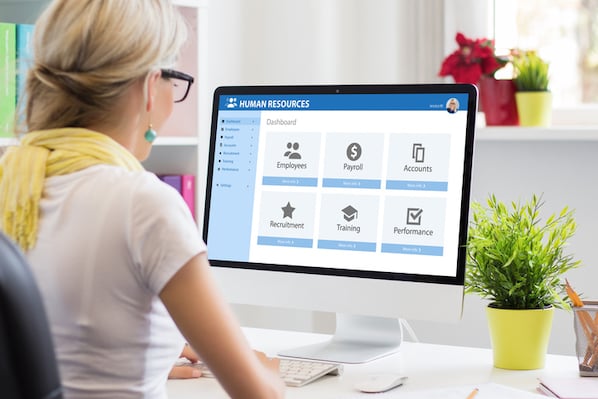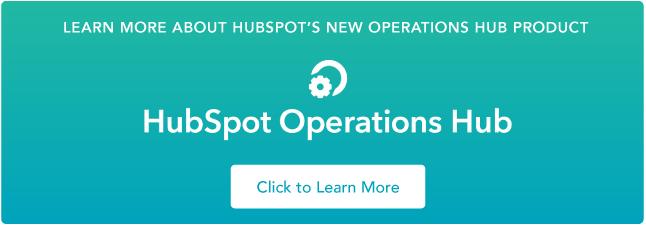Automation Ideas for Human Resources
1. Create a standardized onboarding and training process for new hires.
Onboarding is one of the best opportunities for HR automation. HR managers can create automated workflows to deliver the key forms, documentation, and training resources that new hires need to get started in their roles.
As one way to automate this, some businesses create a dedicated onboarding bot on Slack to introduce new employees and pass over key training documents.
As with many of the HR automation ideas in this list, it all starts with understanding the key processes that you carry out. List the common steps that you take when onboarding every new employee, standardize this where possible while keeping it personalized, and look for areas to streamline or automate.
2. Automate timesheets and approval processes.
If your business requires employees to submit timesheets, this is a key area to automate first. There are countless time-tracking tools out there to help you quickly approve data in the right format and minimize the amount of time you spend chasing missing or incorrect data.
Some good examples are When I Work and Toggl, although time tracking functionality is also built into some accounting systems (like Xero) and project management tools (such as Teamwork). Look for time tracking software that has native integrations with your other key apps whenever possible — it's a great way to save time.
3. Streamline payroll.
Payroll can be another highly time-consuming task for HR teams. With HR automation, the scope for streamlining payroll is more extensive than ever.
For instance, Gusto, the popular US-based payroll software, automates payroll, taxes, and filings. It also offers native integrations with time tracking apps, business operations tools, and expense management to help you streamline processes across your HR tech stack.
4. Use programmatic job ads to target the best candidates.
One of the biggest tech advances in HR in recent years is programmatic recruitment. Here's a definition from PandoLogic:
Programmatic recruitment is the use of technology instead of people for buying, placing, and optimizing job ads... Programmatic recruitment makes sure your job ad is seen by the right candidates on the right sites at the right time. And it does this through the use of big data, targeted job ads, real-time bidding, and campaign optimization.
Running programmatic job ads using a tool like Joveo is a great way to automate more of your recruitment efforts and attract more ideal candidates with less time, effort, and budget.
5. Enrich candidate data.
Another valuable HR automation is to enrich candidate data. Many organizations love Workable's People Search function, which automatically brings together multiple data sources for every candidate to give you the most comprehensive view of their skills, social footprint, and contact details.
Apps like DiscoverOrg also enable recruiters to automatically enrich their database and applicant tracking systems with data such as titles, roles, and technical responsibilities. This is a great way to identify and nurture the best candidates through your hiring pipeline.
6. Automate contracts.
Contract signing is one of the easiest areas of HR to automate. With apps like HelloSign and DocuSign, you can request the signatures you need, sign documents online, and automate follow-ups until everything is collected. These apps also make it much easier and quicker to have documents on the ready when working remotely.
7. Give instant access to the right apps.
A time-consuming part of onboarding new staff is making sure they have access to all the right apps. It gets even more problematic when user credentials for business tools change. You can solve this with a password management app like LastPass. It makes it simple to give each new hire access to exactly the right apps.
8. Track vacation days and speed up leave requests.
Tracking and approving leave doesn't have to be a headache for your HR team. People HR and absence.io are two helpful apps for managing and approving vacation days in less time.
9. Collect performance data for decision making.
You can automatically collect data using performance management apps such as 15Five, or surveys for employee and management feedback using tools like Google Forms and Typeform.
With processes for regular feedback in place, you have the best information at your fingertips to create opportunities for internal growth, personal development, and management optimization. This can help inform promotions, recognize individuals for awards, and let you know where to place your training budget.
10. Automate submitting and approving expenses.
Don't let expense requests clutter up your inbox. For the smoothest process, you want to have a clear and well-documented workflow that everyone in the team knows how to follow. To ensure expenses are submitted in the exact format your HR team needs, you can use spend management software like Spendesk or Concur.
11. Use one inbox for all employee requests.
A great solution for funneling employee requests from all channels (including Slack and email) into one inbox is Back. Not only can you search HR requests in one place and auto-respond to common questions, but you can also view reporting to understand where your HR team is spending the most time.
Here are some types of employee requests to funnel into the same inbox (and organize with tags or filters) to centralize organization:
- Training and travel requests
- Internal tech support
- Payroll questions
- Complaints and feedback
- Contract questions
12. Automate performance appraisal at set intervals.
With continuous performance management software like 15Five, both your HR team and managers can streamline performance appraisals and feedback collection from employees.
This includes sending automated check-ins, 1-on-1s, and "best self-reviews" at set intervals to hear how your employees are doing.
13. Trigger notifications about eligibility for benefits.
If your organization offers benefits based on specific criteria, you can use automation to trigger notifications when the terms are met. An example could be increasing an employee's vacation leave after they've been with the company for a year, or offering stock options to top-performing staff.
You can automate similar notifications to your HR team and management when it's time for performance reviews or a salary raise for individual team members.
14. Streamline offboarding processes.
Like onboarding, creating smooth offboarding processes is one of the best ways to streamline HR operations. Although it's important to keep this highly personalized and to talk things through 1-1 with each employee, you can also introduce some standardized data collection processes — even if these are talked through in person during the exit interview.
15. Integrate HR tools and processes.
As you automate more of your HR processes and HR reporting, think about how you can integrate your tech stack. This can include setting up native integrations and connecting data between apps. This can include setting up native integrations and connecting data between apps.
Marketing Automation



%20(6).png)



![Email Automation: How to Set Up Automated Workflows [Data]](https://53.fs1.hubspotusercontent-na1.net/hubfs/53/email%20automation.jpg)
![Drip Marketing: Everything You Need to Know [+ 3 Examples]](https://53.fs1.hubspotusercontent-na1.net/hubfs/53/drip-marketing_2.webp)



